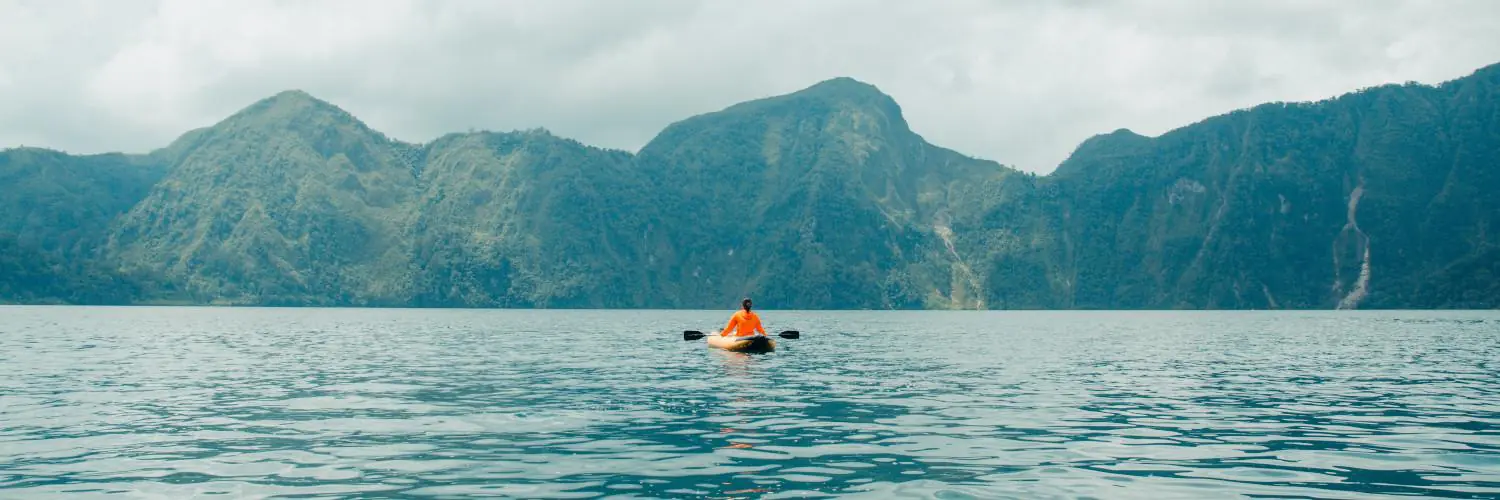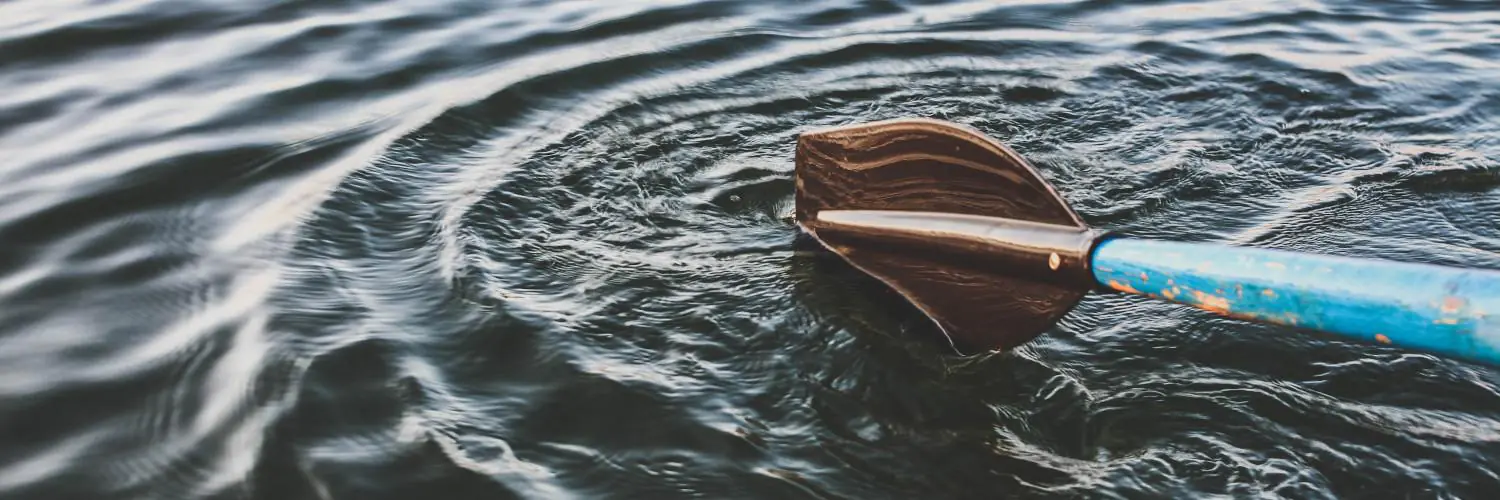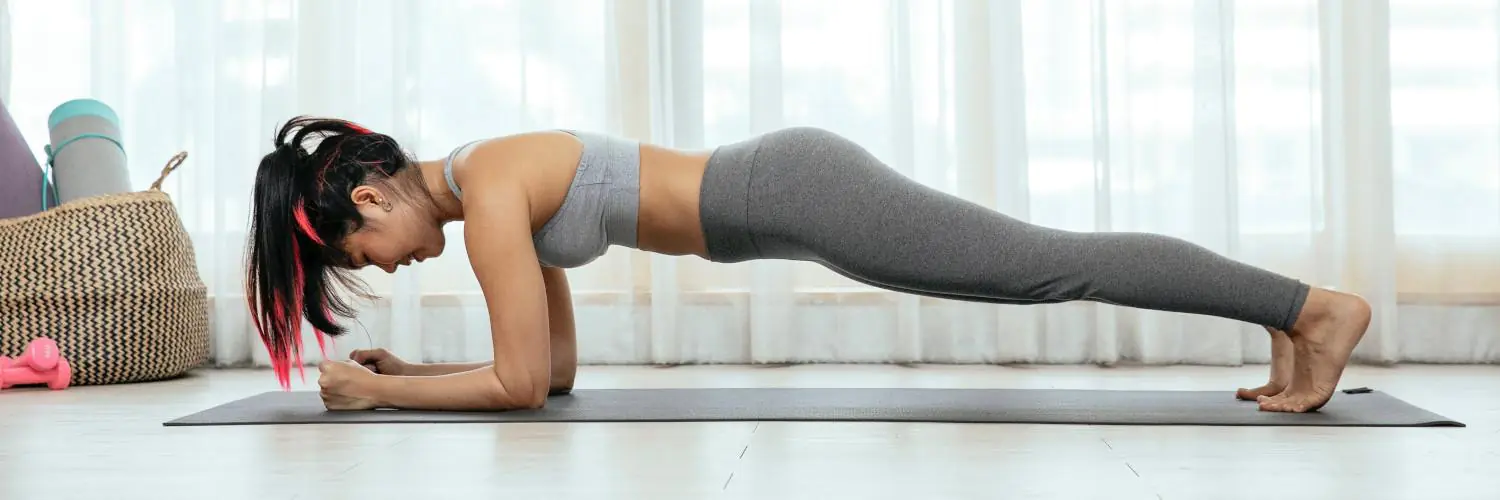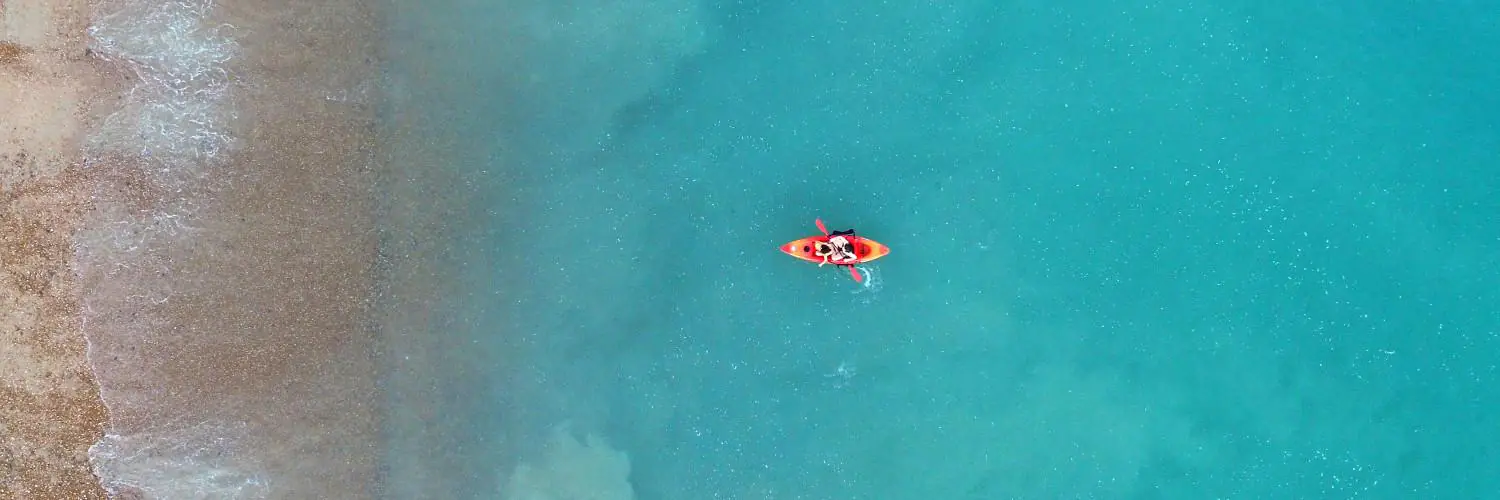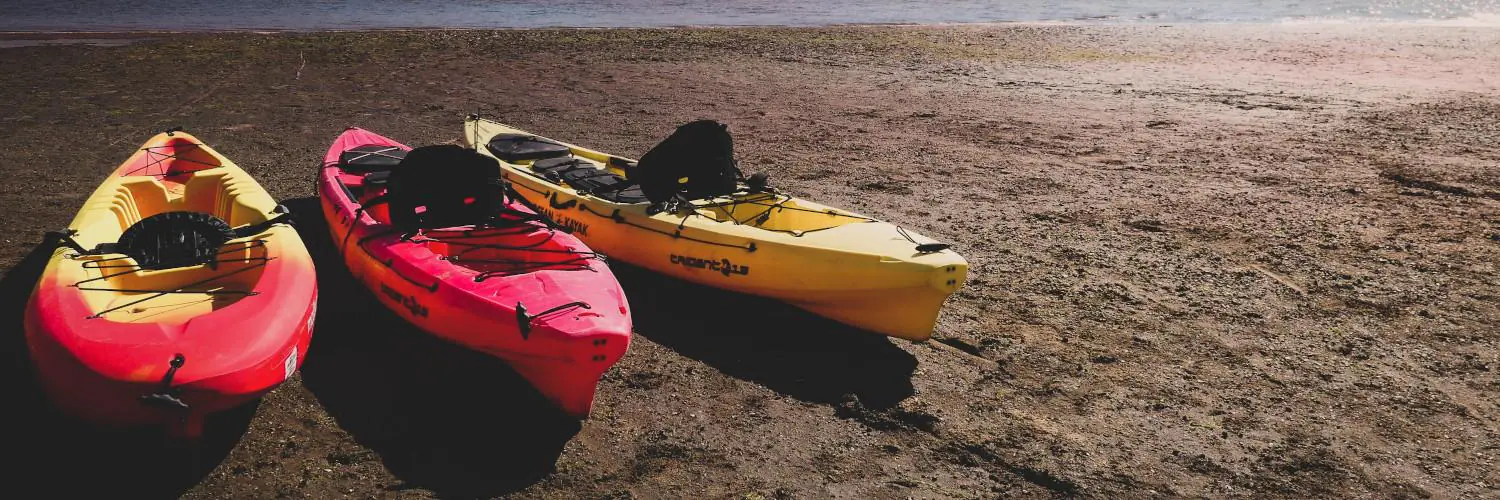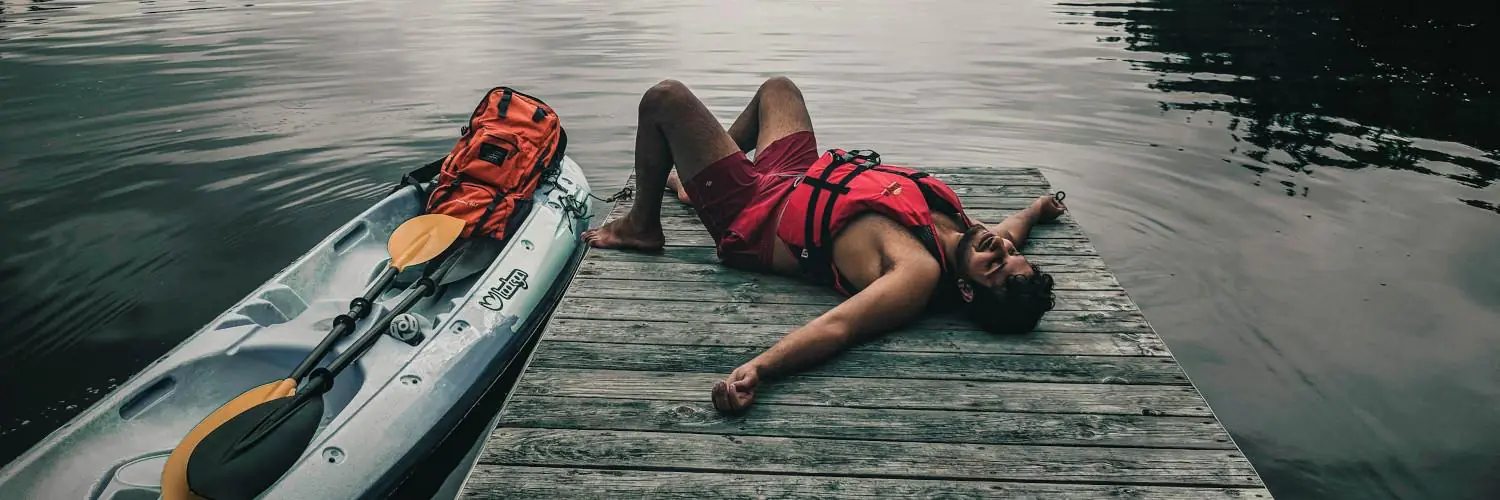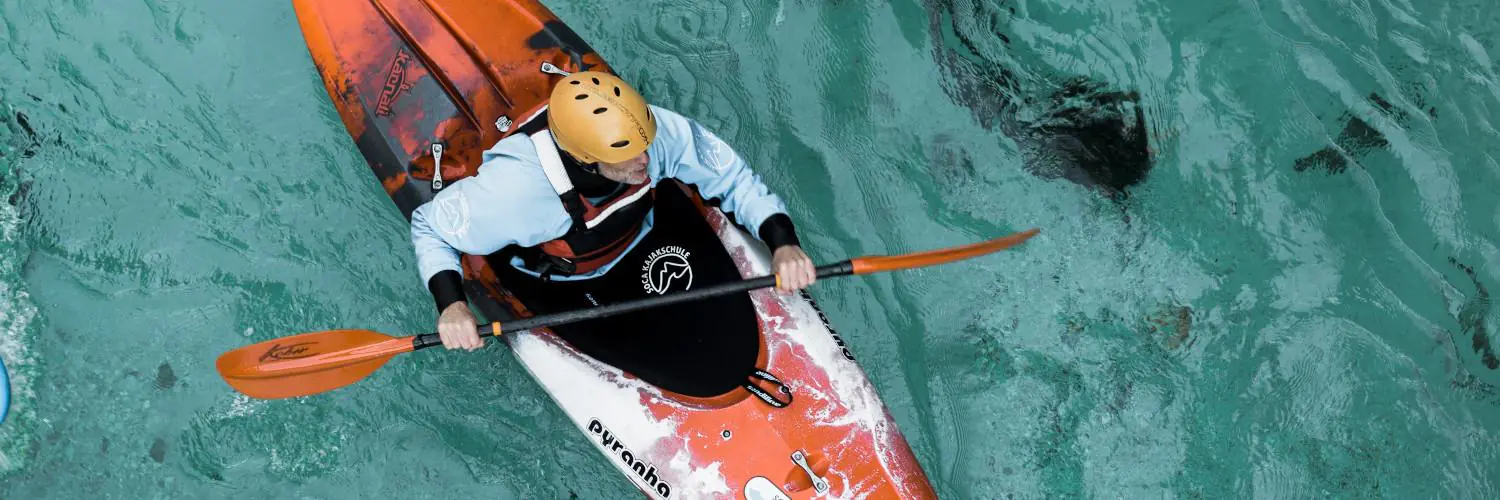Anchoring a kayak in a river can be tricky, but it’s an important skill for kayakers to master. It allows paddlers to stay in one spot while fishing, taking photos, or simply enjoying the scenery.
To anchor a kayak in a river, you need the right gear and technique for the conditions.
The best anchor for river kayaking depends on the river bottom and current. Folding grapnel anchors work well on rocky beds, while drag chains suit slower currents and muddy bottoms.
A good anchoring kit includes a strong rope, an anchor trolley system, and safety gear like a knife and waterproof lights.
Proper anchoring technique is key. Choose a calm spot and drop the anchor upstream of your kayak. Let out enough rope for the anchor to grab the bottom, then secure the line to a cleat.
Stay alert to changes in current or weather that might affect your anchor’s hold. With practice, anchoring becomes second nature and opens up new ways to enjoy time on the river.
Table of Contents
Choosing the Right Anchor for Kayaking in Rivers
Picking a suitable anchor is key for safe kayaking in rivers. The right choice depends on the river conditions and your kayak size.
Types of Anchors
Several anchor types work well for river kayaking. Grapnel anchors have multiple flukes that grab rocky bottoms. They fold up for easy storage.
Mushroom anchors suit muddy river beds. Their wide base sinks into soft ground.
Fluke anchors, also called Danforth anchors, dig into sand or mud. They hold well in strong currents. Bruce or claw anchors grip various bottoms. They reset easily if they slip.
Folding grapnel anchors are popular for kayaks. They’re compact and versatile. Drift anchors, or sea anchors, slow your kayak in fast water. They don’t touch the bottom.
Anchor Weight and Size
Anchor weight matters for holding power and ease of use. Most kayak anchors weigh 1.5 to 3 pounds.
Heavier anchors hold better in strong currents. But they’re harder to pull up.
Larger kayaks may need heavier anchors. Consider your kayak’s size and the river’s flow. A 1.5-pound anchor often works for calm rivers. Use a 3-pound anchor for faster currents.
The anchor should be small enough to store easily. Folding designs save space. Make sure it fits in your kayak’s storage areas.
Material and Durability
Anchor material affects weight and durability. Galvanized steel resists rust and lasts long. It’s heavier than other options.
Aluminum anchors are lighter but may bend easier.
Stainless steel anchors resist corrosion best. They’re good for saltwater use too. Plastic parts on anchors can break, so check for metal construction.
Look for anchors with smooth edges. This prevents damage to your kayak. Durable coatings protect the anchor from wear. They also reduce noise when the anchor moves.
Understanding River Conditions
Rivers can be tricky for kayakers. Knowing the water and finding good spots to stop is key for a safe trip.
Current and Water Flow
Rivers have moving water that pushes kayaks downstream. Fast currents make it hard to stay in one place.
Kayakers need to watch for signs of strong flow like ripples or waves on the surface. Slow-moving parts of the river are easier for anchoring.
Look for bends in the river. The inside of a bend often has slower water. This can be a good spot to stop. Avoid the outside of bends where water moves faster.
Some rivers change speed in different areas. Wide, shallow parts tend to be slower. Narrow spots with high banks usually have faster water.
Identifying Anchoring Spots
Good anchoring spots keep kayaks safe and stable. Look for calm areas away from the main current. Eddies, which are spots where water flows upstream near the shore, work well.
Rocky areas can damage kayaks and anchors. Seek out sandy or gravelly bottoms instead. These give anchors a better grip.
Trees or large rocks on shore can serve as tie-off points. This helps in fast water where anchors might not hold.
Depth matters too. Very shallow spots may not let anchors sink properly. But water that’s too deep can make it hard to set an anchor.
Always check for hazards like low-hanging branches or submerged logs before anchoring.
Kayak Anchoring Techniques
Anchoring a kayak in a river requires specific techniques and equipment to ensure safety and stability. Proper anchoring methods allow kayakers to maintain their position in flowing water.
Anchoring Systems and Methods
Kayak anchors come in various types. Folding grapnel anchors are popular for their compact size and effectiveness. Stake-out poles work well in shallow waters.
To anchor, choose a spot with slower current. Drop the anchor upstream and let it settle. Adjust the line length to about 7 times the water depth. This allows the anchor to dig in at the correct angle.
Never anchor in fast-moving water or from the side of the kayak. These situations can be dangerous. Always anchor from the bow or stern to prevent capsizing.
Using an Anchor Trolley System
An anchor trolley is a pulley system that runs along the side of the kayak. It allows for adjustable anchor positions without moving the kayak.
To use a trolley:
- Attach the anchor to the trolley ring
- Position the ring where needed
- Drop the anchor
- Adjust as needed
This system lets kayakers face upstream or downstream easily. It’s helpful in changing currents or wind conditions. Anchor trolleys increase versatility and control while anchored.
Quick Release Techniques
Quick release methods are crucial for safety in rivers. They allow fast detachment from the anchor if needed.
One method uses a carabiner clip attached to the anchor line. In an emergency, simply unclip to free the kayak. Another option is a quick-release cleat. This device holds the anchor line but can be instantly released with a pull.
Always keep a knife within reach as a backup. It can cut the anchor line if other release methods fail. Practice quick releases before heading out on the water. Being prepared can prevent dangerous situations.
Equipment and Setup
Proper gear is key for anchoring a kayak in a river. The right tools keep you safe and in place while on the water.
Assembling Your Anchoring Kit
A grapnel anchor is a top choice for river kayaking. It works well on rocky bottoms and folds for easy storage.
Pick a 1.5 to 3.5 lb anchor based on kayak size and water conditions.
A strong anchor line is crucial. Nylon rope or paracord work well. Choose a line that’s at least 50 feet long. This gives you plenty of scope to set the anchor.
For muddy bottoms or slow currents, a drag chain can be useful. It digs into soft river beds to hold your kayak in place.
Rigging the Anchor Line
An anchor trolley system helps control your kayak’s position. It’s a pulley setup that runs along the side of your boat. This lets you move the anchor point from bow to stern.
Attach the anchor line to the trolley with a carabiner. This makes it easy to clip on and off as needed.
Use a cleat or cam cleat to secure the anchor line. This allows quick adjustments to line length.
Safety Measures
Always carry a knife to cut the anchor line in case of emergency. Keep it within easy reach.
Wear a life jacket at all times when anchoring. River currents can be unpredictable.
Bring waterproof lights if you plan to anchor at night. This helps other boaters see you.
A drift sock or drift chute can slow your kayak in strong currents. This gives you more control while setting the anchor.
Special Considerations for Kayak Fishing
Kayak fishing in rivers requires careful planning and the right gear. Anglers need to balance stability, control, and access to equipment for a successful trip.
Stability and Drifting Control
Kayak stability is key when fishing in rivers. Choose a wider, flatter-bottomed kayak for better balance. Use an anchor system to hold position in fishing spots.
Anchor trolleys help adjust the kayak’s angle relative to the current. This allows for precise positioning and easier casting.
A drift sock or drift chute can slow the kayak’s movement in fast currents. This gives more time to fish productive areas.
Stakeout poles or anchor poles work well in shallow water. They’re quieter than traditional anchors and won’t spook fish.
Fishing Gear and Accessibility
Organize fishing gear for easy reach. Use rod holders to keep hands free for paddling or handling fish.
Attach a small tackle box to the kayak within arm’s reach. This prevents tipping while digging for lures.
Bring a net with an extendable handle. It makes landing fish easier without leaning too far over.
Use waterproof bags or boxes for electronics, extra clothes, and food. Rivers can be unpredictable, so keep essentials dry.
Wear a life jacket designed for kayak fishing. Look for ones with pockets for tools and tackle.
Essential Safety Precautions
Safety is key when anchoring a kayak in a river. Always wear a personal flotation device (PFD). This life-saving gear keeps you afloat if you fall in the water.
Check the weather before heading out. Strong winds or storms can make anchoring dangerous.
Avoid anchoring in fast currents or near obstacles like rocks or fallen trees.
Bring a whistle and waterproof light. These tools help signal for help in emergencies. A sharp knife is also important to cut the anchor line if needed.
Use an anchor trolley system. It lets you adjust your kayak’s position relative to the current. This gives you more control and stability while anchored.
Pick the right anchor for river conditions. Folding grapnel anchors work well on rocky bottoms. Drag chains are better for slow currents and muddy riverbeds.
Always tell someone your plans before kayaking. Include where you’re going and when you’ll return. This helps rescuers find you if something goes wrong.
Stay alert to your surroundings. River conditions can change quickly. Be ready to pull up your anchor and move if needed.

